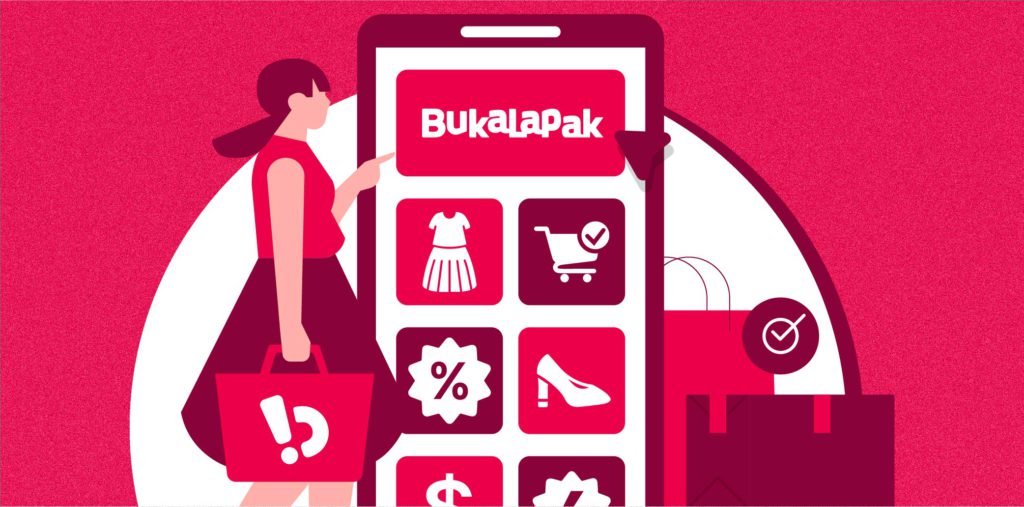Bukalapak, which began its journey as a small startup, has now grown into one of the largest online marketplaces in Indonesia. With millions of users and transactions taking place every day, the company had to ensure its platform could handle the increasing demands and provide a seamless shopping experience for its customers. To achieve this, Bukalapak tech stack turned to a combination of Google Cloud and Microsoft Azure, harnessing the best features of each cloud provider to optimize costs, ensure high availability, and maintain top-notch performance.
The choice of this powerful duo for their backend technology stack reflects Bukalapak’s commitment to innovation and customer satisfaction. By adopting a multi-cloud strategy, the company has been able to capitalize on the strengths of both Google Cloud and Microsoft Azure, providing unparalleled scalability, flexibility, and security for their platform. This winning combination has enabled Bukalapak to stay agile and adaptive in an industry known for its dynamism and rapid transformation.
As we take a closer look at Bukalapak tech stack and cloud infrastructure, we will uncover the various tools and technologies that have played a pivotal role in the company’s success. From leveraging machine learning and artificial intelligence to optimizing data storage and processing, Bukalapak has left no stone unturned in its quest for technological excellence.

Frontend technologies of Bukalapak Tech Stack
Bukalapak tech stack has a robust frontend technology list to deliver a seamless user experience and drive their success in the digital marketplace.
JavaScript: As a widely-used programming language, JavaScript enables Bukalapak to create interactive and engaging web applications for their millions of users. JavaScript is crucial for both front-end and back-end technologies.
HTML: As another core technology for web development, HTML (Hypertext Markup Language) allows Bukalapak to structure and present content on their platform. HTML is a fundamental building block for the front-end of their platform.
GraphQL: This query language and runtime for APIs has been mentioned as one of the technologies used by Bukalapak. GraphQL streamlines data fetching and enables more efficient and flexible communication between the frontend and backend systems. This ultimately results in a more responsive and optimized user experience.
Frontend Transformation: Bukalapak has undergone a Front End Transformation to address concerns and improve development processes. This transformation likely includes the adoption of modern frameworks, libraries, and tools to enhance their frontend stack and stay ahead in the competitive digital landscape.
Read more: Importance of Mobile Optimisation of Multivendor Marketplace Platforms
Backend technologies of Bukalapak Tech Stack
Bukalapak’s backend technology stack focuses on providing a scalable, stable, and secure infrastructure to support their growing e-commerce platform. Key elements of their backend technology stack include:
Microsoft Azure: As a primary cloud service provider, Microsoft Azure enables Bukalapak to effectively manage its vast array of services and applications. Azure provides a flexible and reliable infrastructure, ensuring high performance and security for the platform.
GraphQL: GraphQL is a query language for APIs that allows Bukalapak to request and manipulate data more efficiently than traditional REST APIs. By using GraphQL, Bukalapak can reduce the amount of data transferred over the network and improve the overall performance of their platform.
Data Platform: Bukalapak has a robust data platform that enables each tribe (business unit) to create their own ETL (Extract, Transform, Load) processes. This empowers teams to handle data processing and analytics tailored to their specific needs, driving business growth and innovation.

Infrastructure technologies of Bukalapak Tech Stack
Bukalapak tech stack primarily consists of two major cloud service providers: Google Cloud and Microsoft Azure.
Google Cloud: As Bukalapak’s main cloud supplier, Google Cloud provides critical services and tools to support their online and offline commerce platforms. It offers a range of services, including computing, storage, and data analytics, which help Bukalapak manage its vast data and run applications efficiently.
Microsoft Azure: As part of their multicloud strategy, Bukalapak also utilizes Microsoft Azure, a leading cloud computing service. Azure offers a wide range of solutions, such as Infrastructure as a Service (IaaS), Platform as a Service (PaaS), and Software as a Service (SaaS). By adopting Microsoft Azure as their preferred cloud platform, Bukalapak can build resilient infrastructure to support their 6 million online sellers and Mitra Bukalapak, ensuring scalability, flexibility, and security.
Bukalapak’s multicloud strategy enables them to leverage the best features of each cloud provider, optimize costs, and ensure high availability and performance for their platform.
Read more: Creating a Successful Ecommerce Marketplace Business Model
Conclusion
In conclusion, the Bukalapak tech stack truly set it apart as a trailblazer in the world of e-commerce. By harnessing the power of cutting-edge technologies such as Microsoft Azure, GraphQL, and Google Cloud, Bukalapak has managed to create a robust, flexible, and scalable platform that meets the ever-evolving needs of its extensive user base.
Bukalapak’s choice of backend technology stack, including their data platform and Full Stack Acceleration Program, not only reflects the company’s commitment to innovation but also its dedication to delivering a seamless shopping experience for its customers. As a result, it has managed to maintain a competitive edge over rivals in the fast-paced industry.
Moreover, Bukalapak’s multicloud strategy, which encompasses both Google Cloud and Microsoft Azure, demonstrates the company’s foresight and adaptability. By leveraging the unique features of each cloud provider, Bukalapak has optimized costs and ensured high availability and performance for their platform. This strategic approach showcases the company’s ability to think ahead and make informed decisions that benefit both the platform and its users.
The successful integration of these advanced technologies has led to impressive growth and development for Bukalapak. As a result, the company has been able to rapidly expand its presence, attract new customers, and gain a larger share of the market. This success story serves as an inspiration for other businesses seeking to harness the power of technology to drive their growth and stay ahead in today’s competitive landscape.










